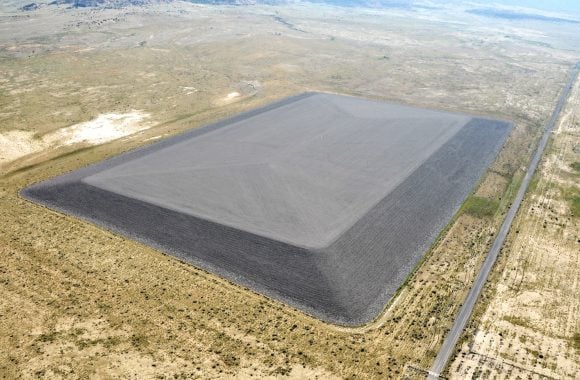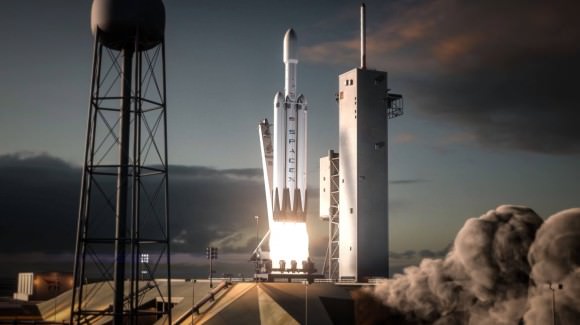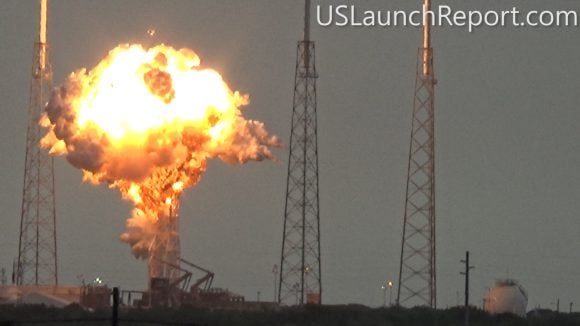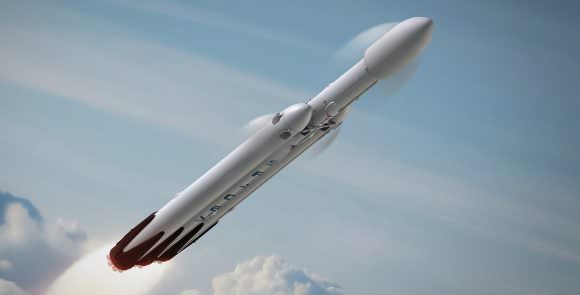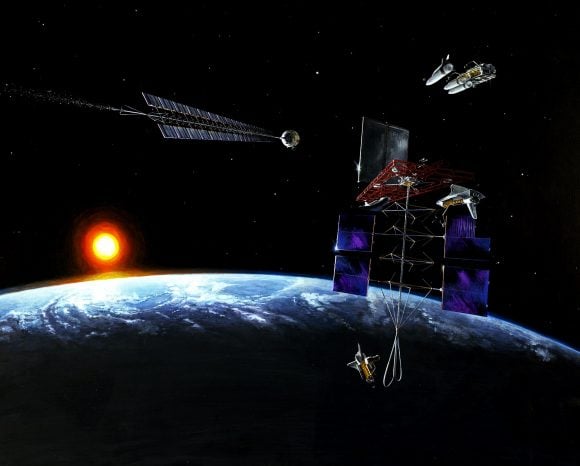When I look at the Sun, I don't see a warm life-giving orb, nourishing all living creatures here on Earth. No, I see that fiery ball as a cosmic garbage compactor. A place I can dump all my household garbage, to make room for new impulse purchases.
I mean, the Sun is right there, not doing anything right? It's hotter than any garbage incinerator, and it's the gravitational well at the heart of the Solar System. Get me a rocket, let's blast that waste into oblivion.
Okay, I suspect it's going to get expensive, so let's just start with the worst garbage on Earth: nuclear waste. You know, the byproduct of nuclear reactors that generate electricity for many parts of the world. This stuff is highly toxic and it's going to be around for hundreds of thousands of years.
It's also pretty dense, maybe it does make sense to get this stuff off Earth and into the Sun? Let's run the numbers.
Nuclear waste, or radioactive waste, of course, is anything leftover material that still has radioactivity. For the most part, we get this as the leftover material from nuclear power reactors, but it's also generated by hospitals, and nuclear weapons manufacturing. We've got leftover nuclear waste from uranium mining, radium processing, and various civil and military research projects.
[caption id="attachment_133322" align="aligncenter" width="580"]
Inside this geometric is a demolished uranium mill and its radioactive tailings. Credit: U.S. Department of Energy[/caption]
For example, when you mine uranium from the ground, you get leftover radium and radioactive rock, soil, and even the water. When you power a nuclear reactor, the spent fuel rods are still highly radioactive and dangerous. In the United States alone, there are hundreds of different sites which are heavily contaminated, over thousands of acres.
According to the World Nuclear Association, OPEC nations generate 300 million tonnes of toxic waste every year. We're talking about poisonous chemicals, medical waste, coal dust. Really anything that you don't want anywhere near you, or inside you.
Just to give you a sense of scale, that's a cube of toxic poisons nearly a kilometer to a side, assuming the stuff is a little more dense than water.
Out of this, only 97,000 tonnes of nuclear waste is generated across the planet every year. This is radioactive wastes of all types. That's only .03% of all the toxic waste.
But for the purpose of our calculations, I'm going to zero in on the most toxic, most radioactive material we're dealing with: the high-level waste produced by nuclear reactors. Now we're merely talking about 12,000 tonnes per year, or 12% of the nuclear waste showing up on our planet every year.
Now, let's look at launch costs. Most rocket companies are going to charge you $10,000 to $20,000 per kilogram to blast a payload into Low Earth Orbit. The best deal on the market right now is SpaceX at around $4,000 USD per kilogram. And if they get the Falcon Heavy flying this year, it could bring the price down to around $2,500 per kilogram.
If all we wanted to do was blast all this waste into Low Earth Orbit, the calculations are pretty simple. 12,000 tonnes is 12 million kilograms. Multiply that by $2,500 per kilogram, and you get 30 billion dollars. You're looking at 240 Falcon Heavy launches per year. Almost a launch every single day carrying a payload of high-level nuclear waste. Out of sight, out of mind.
[caption id="attachment_118550" align="aligncenter" width="580"]
SpaceX Falcon Heavy rocket poised for launch from the Kennedy Space Center in Florida in this updated artists concept. Credit: SpaceX[/caption]
That's a lot of money, but in theory, the world could afford it if they wanted to stop having wars, or something. If they wanted to blast off all the nuclear waste, it would be more like 250 billion. Again. An incomprehensible amount of money, but still within the realm of possibility, assuming that SpaceX gets the Falcon Heavy launching, lofting payloads of nuclear waste 50 tonnes at a time.
But this is Low Earth Orbit, and we don't want to go there. Anything in LEO still experiences friction from the Earth's atmosphere, and eventually it's going to return back to Earth. Imagine regular meteor showers of highly radioactive plutonium. That would be bad.
It would be more safer to launch this stuff into Geostationary Orbit, where the television satellites are broadcasting from. Material in this orbit can be expected to hang around for a long long time.
You're looking at twice the price to blast off to GEO, so go ahead and double your costs to put that stuff safely out into space. 60 billion dollars for high-level waste. 500 billion for all the nuclear waste.
I'm sure SpaceX will give you a volume discount. And there might be smarter orbits where the waste has totally decayed into something safer by the time it re-enters the Earth's atmosphere. What I'm saying is, there might be some cost savings.
Let's say we've run all these numbers, and the cost is still worth it. But here's the problem, rockets fail on a regular basis. They explode on the launch pad, or on their way to orbit. One bad explosion could spray highly toxic plutonium across a huge swath of the planet.
[caption id="attachment_130590" align="aligncenter" width="580"]
SpaceX Falcon 9 rocket moments after catastrophic explosion destroys the rocket and Amos-6 Israeli satellite payload at launch pad 40 at Cape Canaveral Air Force Station, FL, on Sept. 1, 2016. Credit: USLaunchReport[/caption]
For one rocket, there's a pretty low risk. Rockets are about 95% reliable, which means that 1 in 20 is going to fail somehow. If you're only launching 240 rockets, you're looking at 12 failure, some of which will be detonations on the launch pad, or explosions at a high altitude. At that rate, we're guaranteed that it'll always be cloudy with a chance of plutonium rain somewhere on Earth.
If having thousands of tonnes of nuclear waste hanging over your head makes you nervous, then you're going to want to hear about more, permanent options. Let's crash that stuff into the Sun.
It turns out, blasting it into the Sun is much much more expensive. Here's why: You'd think that just blasting your waste into space means that it would just fall into the Sun, but your waste is still orbiting the Sun at the Earth's velocity - 30 m/s sideways.
In order to actually get it to drop into the Sun, you need to cancel out the orbital velocity. In other words, you need to give your rocket about 31.7 m/s in velocity, to account for the atmosphere drag of Earth, and then cancel out the orbital velocity.
NASA's New Horizons spacecraft needed 16.1 m/s to reach Pluto, so you're talking about double the velocity.
To be fair, New Horizons and other spacecraft use gravitational slingshots to steal velocity from Jupiter and other planets, so it's possible you could perform some complicated trajectory sweeping past the various planets to get the change in velocity you need. I haven't done the math, but let's just assume, there could be savings.
If you don't cancel out that motion, your nuclear waste is going to just orbit the Sun forever, like an asteroid of garbage.
There's another path you could take. Instead of trying to drop down into the Sun, you fly outwards until you've almost escaped the pull of the Sun. Where the angular momentum, that sideways motion, is almost zero. Cancel that out with a little thrust, and then let the Sun's gravity pull your waste back down to its doom.
It'll take hundreds or even thousands of years, but there would be cost savings. Then you only need to gain about 16.5 m/s in velocity.
[caption id="attachment_129985" align="aligncenter" width="580"]
The Falcon Heavy, once operational, will be the most powerful rocket in the world. Credit: SpaceX[/caption]
Rockets need to carry more of their payload as fuel if they're going to gain higher velocities. A Falcon Heavy can carry more than 54 tonnes to Low Earth Orbit, but only 2.9 tonnes to Pluto.
In other words, using the most efficient trajectory, you'd still need about 20 times more rockets to blast your fuel into the Sun. In other words, multiple your costs by a factor of 20.
$1.2 trillion to launch the high-level waste into the Sun on a trajectory that takes a long long time.
The bottom line is that blasting our nuclear waste off into space, into the Sun, is just too expensive - by several orders of magnitude. Not to mention incredibly dangerous for the inevitable rocket failures that will compound the problem.
No, we need to learn how to recycle nuclear waste, to make it less toxic. We need to be willing to spend the resources to properly clean up contaminated sites, and we need to careful consider the long term consequences of how we generate our energy. Not just with nuclear power, but with any polluting form of energy generation.
But you know what idea I like even better? I agree with Jeff Bezos when he says that we're eventually going to want to move all heavy industry and manufacturing off Earth and out into space.
[caption id="attachment_133324" align="aligncenter" width="580"]
We could take our manufacturing off-planet to reduce environmental risks. NASA/Denise Watt[/caption]
Instead of cleaning the waste out of our environment, let's mine it, refine it and manufacture it out in space in the first place. Then we can send the products back to Earth, and skip most of the pollution.
Now I've done the numbers, what do you think? Still worth it to launch nuclear waste into space? Let me know your thoughts in the comments.
 Universe Today
Universe Today

